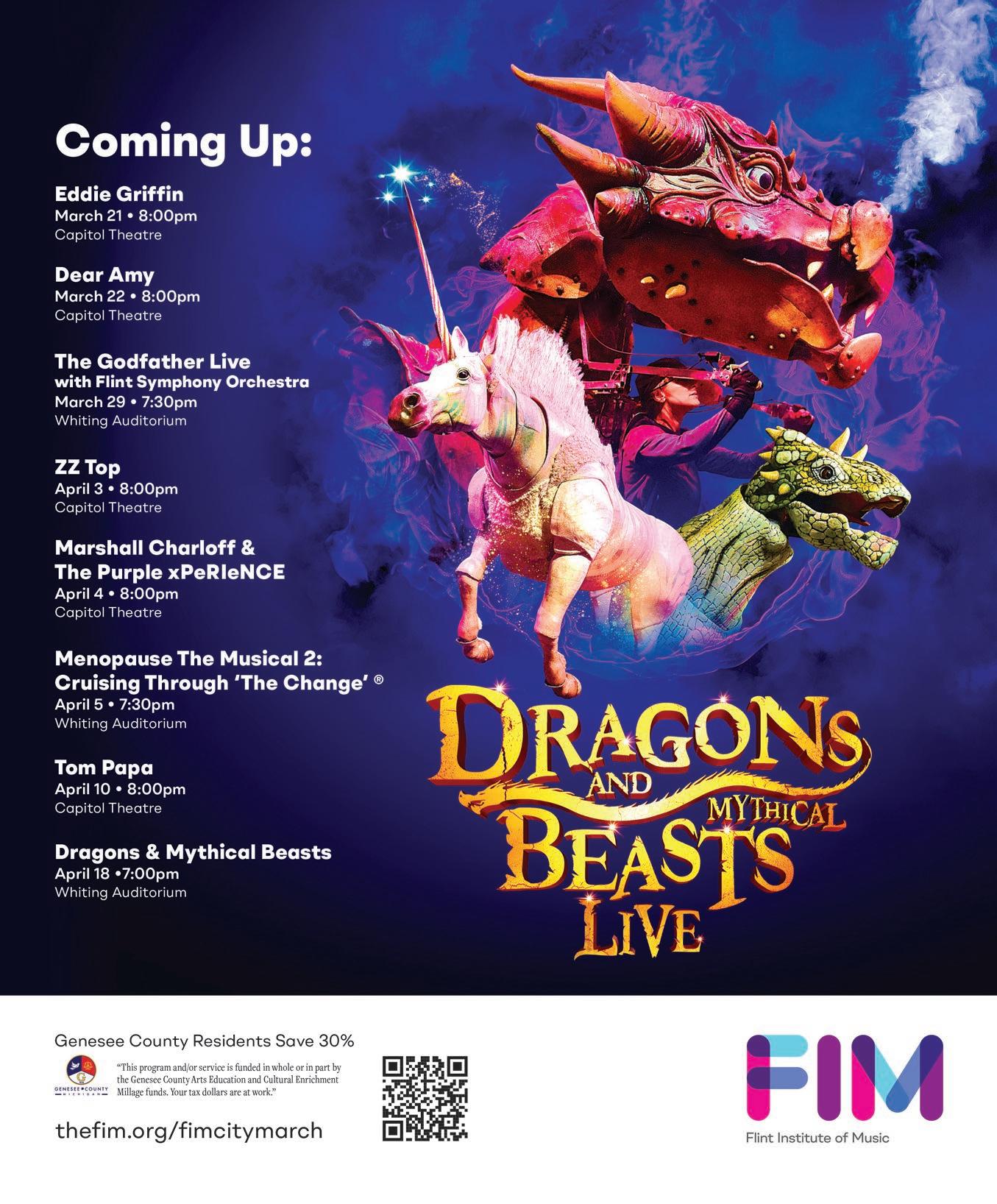






AsI write this, Dallas, TX is dealing with a sub-zero wind chill … What? Meanwhile, here in Michigan, we’re looking forward to a welcome “warm-up” to 30 degrees – for some, that means T-shirt weather! Will all the snow melt by spring? Who knows. Last year, it was pushing 70 degrees on March 4 and by the rst day of spring, we were back to freezing. Classic Michigan.
Speaking of hot topics – education is making headlines daily, and for good reason. Few things shape our society more. In this issue, we’re diving into a variety of top-notch educational opportunities in Greater Flint. From cutting-edge university programs to innovative library and museum initiatives, learning is evolving, inspiring and leaving a lasting impact. Check out Exploring Education on page 10 for a sample of the unique things available right here in our backyard.
Another topic that’s been generating plenty of buzz: Nutrition. Eating well is the foundation of good health, and in this month’s “Eats” feature, we’re highlighting e Sol Section Plant-based Cafe & Juice Bar, a new venture tucked inside Totem Books on Court St. in Flint. Whether you’re a die-hard plantbased eater or just curious, their creative and healthy menu is turning heads. e food looks (and sounds) fantastic! Read all about it on page 36.
Last month, the Greater Flint community braved the bitter cold and gathered to celebrate Black History Month, our thriving arts scene, and – of course – our love for all things automotive. We have a lot of great photos! And in case you’re already dreaming of warmer days, Back to the Bricks® has posted their 2025 spring and summer event schedule.
We made it through a tough Michigan winter – now, let’s get ready for some great times ahead.
anks for reading and Happy Spring!

Publisher & Editor in Chief

Fenton’s Open Book
105 W. Shiawassee Ave. Fenton, MI 48430
810.629.8000
MI 48503
Publisher & Editor In Chief
Vince Lorraine
Vince@mycitymag.com
Managing Editor
Sherron Barden
Sta Writer
Cheryl Dennison
Freelance Writer
Mark Spezia
Contributing Writers
Dr. Christopher Douglas
Vera Hogan
Alexandria Nolan-Miller
Leslie Toldo
Shannon White
Graphic Designer
Hailey Carriger
Contributing Artist
Daria Akulova
Accounting/Circulation
Kim Davis
Account Executive
Terese Allen
COVER ART
Photo Courtesy of Back to the Bricks®
My City Magazine, Inc. 14165 Fenton Rd., Fenton, MI 48430 810.230.1783 ©2025 My City Magazine, Inc. All rights reserved. Printed in U.S.A. MyCityMag.com
ISSN#1559-3436 is published monthly by My City Magazine, Inc., 14165 Fenton Rd. Fenton, MI 48430. Canadian Mail Agreement #41971515. For back issues, inquire for availability. Editorial Correspondence: Address product information and inquiries to: Editorial Department, My City Magazine, 14165 Fenton Rd., Fenton, MI 48430, phone 810.230.1783. To authors, photographers and people featured in this publication: All materials, articles, reports and photographs in this publication are the property of My City Magazine and cannot be used without written permission. The opinions and conclusions recited herein are those of the respective authors and not of My City Magazine. My City Magazine is not responsible for returning unsolicited manuscripts, photographs or other materials. Every effort will be made however, to return rejected manuscripts, etc., if they are accompanied by sufficient firstclass postage, but the Publisher will not be responsible for any loss of such material.



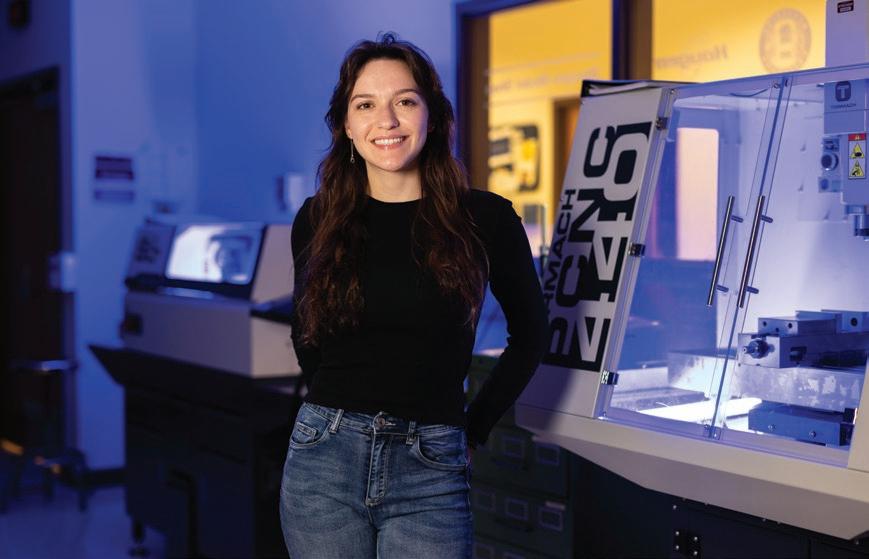


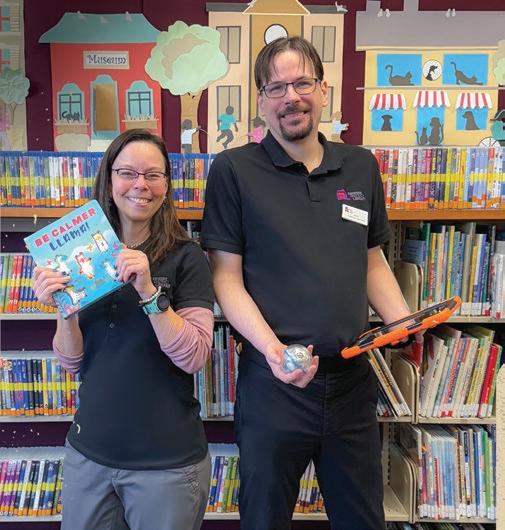








Compiled by Cheryl Dennison
DR. CHRISTIAN BOWERS is a neurosurgeon with Hurley Medical Center specializing in skull-base surgery and brain tumors. He grew up in the Intermountain West, spending his middle and high school years in Salt Lake City, UT. He attended the University of Denver on a Division 1 Soccer scholarship, earning recognition as an ESPN The Magazine 1st-Team Academic All-American and setting a school record for game-winning goals. After completing his undergraduate studies, he pursued medicine at Georgetown University School of Medicine, followed by a neurosurgical residency at the University of Utah.
Dr. Bowers then completed a fellowship in skull base, brain tumor, and cerebrovascular neurosurgery at the Swedish Neuroscience Institute in Seattle, WA training under Dr. Johnny Delashaw, a pioneer in the field. “He is my mentor and now has joined us in Flint, bringing one of the world’s most experienced skull base experts to Flint,” Dr. Bowers states.
“My career has been dedicated to studying outcomes research in neurosurgery, and have been fortunate to have become the world’s leading expert investigating frailty’s impact in neurosurgery. I also have spent my entire career mentoring medical students and continue to do so currently. Clinically, my interests remain neurosurgical oncology, skull base neurosurgery, and traumatic injuries of the brain and spine, along with other acute conditions of the brain and spine. My current leadership role builds on my previous leadership positions as vice chair of clinical affairs in the department of Neurosurgery at the University of New Mexico and program director of the residency training program there and associate residency program at New York Medical Center,” he adds.
Currently, Dr. Bowers serves as the Director of Neurosurgical Oncology at Hurley Medical Center, where he is helping to expand the hospital’s neurosurgical capabilities and improve access to advanced brain tumor and skull base surgeries. He graciously took time to answer a few questions about himself.
Tell us about your family and what you like most about Michigan.
I have been married to my wife, Brooke, for 16 years and we have four children –Braylon (13), Lola (11), Bo (10) and Mila (8). Our family enjoys outdoor activities, traveling, and supporting our kids’ passions. The boys are avid travel soccer players and love to golf whenever they can, while the girls love horseback riding, running, and art classes and activities of all types. What I love most about Michigan is the sense of community, Midwestern practicality coupled with friendliness, the natural beauty, the dominating life motto of resilience and grit, and the opportunity to provide high-level care to a patient population that is completely underserved and truly needs it.
I was drawn to Michigan by the opportunity to collaborate with Dr. Marc Moisi at Hurley Medical Center, building a premier neurosurgical oncology and skull base program, and to partner with our shared mutual mentor, Dr. Johnny Delashaw. Flint has a strong need for expanded neurosurgical services, and I saw an opportunity to make a very real, profound and lasting impact in a safety-net hospital setting while working with two of my good friends who are world-class neurosurgeons, alongside a highly skilled team of surgeons and specialists and a healthcare community completely dedicated to providing excellent care. Continuing my commitment to serving diverse patient populations made this move an
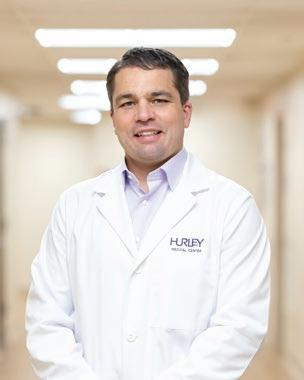
Board Certification
American Board of Neurological Surgery
Medical School
Georgetown University School of Medicine
Residency
University of Utah School of Medicine
(Neurological Surgery)
Fellowship
Swedish Medical CenterSwedish Neuroscience Institute (Skull Base/ Cerebrovascular)
Areas of Expertise/ Special Interest
Neurosugical Oncology (All Brain Tumors)
Skull Base Neurosurgery - Lateral & Anterior (Vestibular Schwannomas, Pituitary Adenomas, Meningiomas, CSF Leaks)
Neurosurgical Frailty Risk Assessment
Traumatic Spinal & Brain Injury (TBI)
Cord Injury (tSCI)
ideal fit for me, professionally. Michigan is an amazing place to raise a family, with some of the best youth sports programs and education systems in the world, so it made a ton of sense personally, also. Is it true that you have only worked at safety-net hospitals? Why?
Yes -- providing care to underserved populations has been a defining principle of my whole career. I have exclusively worked at large, publicly funded level 1 trauma hospitals, including Westchester Medical Center, the University of New Mexico and now, Hurley Medical Center. I strongly believe that every patient, regardless of financial status, deserves access to cutting-edge neurosurgical care. My fluency in Spanish has historically allowed me to break down language barriers and ensure that patients from diverse backgrounds receive high-quality, culturally competent care.
The Hurley Neurological Center has a team you are very familiar with, including your mentor. What’s that like?
Initially, the best part about coming to Hurley Medical Center was the opportunity to become partners with an amazing friend and previous co-fellow, Dr. Marc Moisi, and with our previous mentor, Dr. Delashaw – a world-famous neurosurgical legend with more experience than just about anyone else in the world. Dr. Moisi is a highly accomplished and skilled neurosurgeon with an expertise in complex spinal pathologies and a shared vision for expanding the neurosurgical services in the region and establishing a Neuro-
surgical Center of Excellence at Hurley Medical Center. Working with both of them as partners has been an incredible experience, as we are focused on bringing new capabilities to Hurley Medical Center, particularly in skull base surgery, complex spine procedures and neuro-oncology. Together, we are building a world-class program and ensuring that patients in Flint and beyond have access to state-ofthe-art neurosurgical care.
You have been working on a project to change the way residents apply for residencies. Can you explain that?
I have been developing a new system to reform how residency applicants are evaluated and subsequently selected. The traditional system often overemphasizes the quantity of publications rather than the quality of research and contribution to the field. To address this, a colleague and I have created objective, standardized metrics including the “Publication Value Unit” and “Arms Race Control Score,” which better quantify an applicant’s research efforts and impact. These metrics aim to reward meaningful, high-quality research over sheer publication volume, reduce inequities in residency selection by focusing on effort and contribution, and encourage a more balanced and fair evaluation of applicants. This initiative has been well-received at national conferences, across a variety of disciplines, and I believe it has the potential to fundamentally change residency selection criteria to ensure that the most capable and dedicated candidates are

chosen and create a level playing field to evaluate applicants. We hope it will reduce or eliminate the publication “arms race” that has taken over medical schools and residency applications. The article was published on February 17.
How have you seen your work and your team affecting this region?
In a short time, our work at Hurley has already expanded the neurosurgical offerings available to patients in the area. We are now providing complex brain tumor surgeries, minimally invasive skull base procedures, advanced neurosurgical oncology treatments and open vascular treatments that previously required patients to travel out of the area. The ability to deliver high-level care locally means better outcomes, greater convenience and improved access for patients across Michigan and beyond. In addition, my Neurosurgical Frailty & Outcomes Data Science Lab continues to produce cutting-edge research, contributing new knowledge to the field while mentoring the next generation of neurosurgeons and scientists.
The Hurley Neurological Center is attracting patients from across the state and country?
Yes. The combination of expertise, newly available surgical techniques and a commitment to excellent patient care is positioning Hurley as a regional destination for complex neurosurgical cases. With our continued growth and advancements in neurosurgical oncology and skull base surgery, I expect this trend to accelerate even further. Dr. Delashaw’s name, alone, brings patients in from all over the world.
You are now performing several procedures Hurley has never provided before?
Yes, Dr. Delashaw and I have started doing minimally-invasive skull base and brain tumor surgeries, and have done open vascular procedures such as AVM and aneurysm treatments. These innovations are transforming Hurley into a neurosurgical oncology center, providing patients with access to treatments they previously had to seek elsewhere.



ducation is more than classrooms and textbooks – it’s about discovery, creativity and lifelong learning. In this special section, we shine a light on the dynamic programs and initiatives shaping minds across our community. From interactive museum exhibits and art-driven learning experiences to music therapy in unexpected places, local organizations are redefining how education connects with everyday life. Whether it’s an Intro to ASL at the library, “Adulting 101” life skills courses, or groundbreaking university advancements in finance and sustainability, these stories showcase the power of learning at every stage. Dive in and explore how education in our region is evolving, inspiring and making a lasting impact.


COMPILED BY SHERRON BARDEN
PHOTOS COURTESY OF KETTERING UNIVERSITY
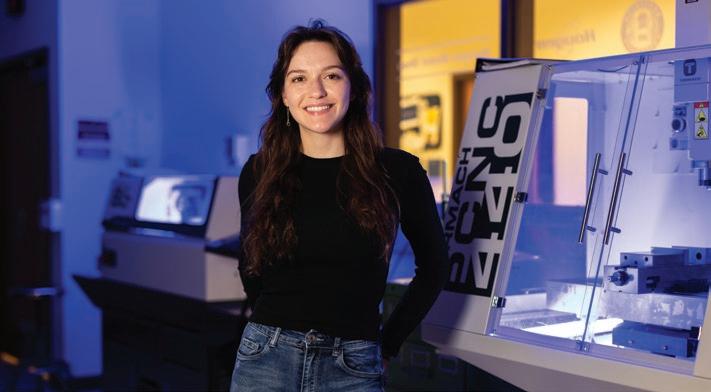
At just 16, Remington Steenwyk set sights on sustainability’s vast, unexplored potential. Raised in Onekama, MI and later residing in Caledonia, Remington possesses a passion for engineering that blossomed early. “Growing up in areas rich in natural beauty, I saw rsthand the impacts of environmental neglect,” she says. is exposure kindled her interest in nding practical solutions to pressing environmental issues, steering her to her current path.
“I wanted to tackle one of engineering’s most pressing challenges: making ight more sustainable,” Steenwyk says. Now a senior at Kettering, she is pursuing a degree in Mechanical Engineering focusing on alternative energy and sustainability while co-oping at QED Environmental Systems in Dexter, MI – her projects at
QED focus on harvesting renewable energy and increasing the sustainability of products. “We’re exploring everything from hydrogen to biofuels and even energy from waste,” she says. e journey has been challenging, especially the implementation of new technologies. “Navigating the complexities of high-altitude CO2 emissions and the technicalities of renewable energy sources in aviation requires skill but persistence,” Remington says. Her role involves conducting extensive research and practical tests to identify the most e cient and sustainable energy solutions.
Remington has two patents currently pending approval. e rst is for a pump-puller to help workers safely remove tubes covered in toxic sludge from the bottom of land ll wells. e sec-
ond patent is for a new pneumatic pump design, which is the focal point of her thesis work. Remington’s design would allow all moving parts of the pump to be above ground so workers would have easy access.
Re ecting on her experiences, Remington is optimistic about her future and the role she hopes to play in a greener industry. “My aim is to reduce industry’s ecological footprint sig-
“When you’re up there in the sky, you’re not just flying; you’re carrying the responsibility of the future.”
ni cantly,” she says. She is driven by a blend of technical interest and a profound commitment to environmental stewardship.
Remington’s proactive approach to fostering inclusivity extends beyond personal success; she aims to inspire and empower other women.
“It’s crucial for women entering STEM to see they are not alone and their contributions are essential,” she says. rough her role as treasurer of Pi Tau Sigma, the International Honor Society for Mechanical Engineers and her participation in the Society of Women Engineers, Remington participates in initiatives encouraging more women to enter and thrive in engineering elds.
Looking ahead, Remington envisions her career will combine innovation with practical applications and hopes to inspire more sustainable practices across the aviation industry. “Sustainability isn’t just a part of my job description – it’s a guiding principle for the future of engineering,” she concludes, hopeful that engineers like her will shape a more sustainable world.
Gift Supports Scholarships and Endowment Focused on Sustainability, Green Manufacturing and Mobility Technologies
Kettering University proudly announces it has received a $1 million gi from Wen Han and his wife, Jessie Jia, on behalf of Windrose Technology, a Silicon Valley-based leader in heavy-duty electric vehicle innovation. is gi by the Windrose Technology founder and CEO and coordinated by Kettering alumnus Jason Roycht ’96 underscores the University’s commitment to incorporating sustainability and clean energy education into the curriculum. e gi is part of a broader ongoing global activity led by Wen and Jessie involving multiple universities to promote education, sustainability and global cooperation.
“Kettering University is pleased to partner with Windrose Technology in preparing the next generation of engineers and innovators to tackle the pressing challenges of sustainable manufacturing and materials as well as clean energy,” said Jennifer Patterson, Vice President of Advancement and External Relations. “ is generous gi not only enhances our ability to provide students with hands-on experience in renewable energy and green manufacturing technologies but also represents the critical connection between education and industry.”
e gi includes a Sustainability Endowment that will empower Kettering’s College
of Engineering to expand its sustainability initiatives, including hosting guest speakers, organizing faculty and student participation in conferences, and fostering industry partnerships. In addition to the endowment, the Windrose Technology Scholarship will bene t students with interests in sustainability, green manufacturing and mobility technologies. is endowment will be synchronized with e orts and additional endowments initiated by Wen Han across several top universities, including his alma mater, Stanford University, to promote learning, inspiration, innovation and collaboration among students, faculty and alumni toward sustainability e orts.
Windrose Technology’s gi aligns with Kettering University’s commitment to advancing sustainability and clean energy. Wen Han sees this partnership as an opportunity to inspire future engineers to tackle the world’s most pressing challenges.
“Sustainability is the key mission of my career, and automotive is the key area that drives much of the pollution today,” Han said. “Everyone starts in school before they go into the workforce and they should be entitled to study sustainability before they make a career choice.”

Jason Roycht, an executive at Windrose Technology and a former executive at Nikola Motors and Robert Bosch, played a pivotal role in developing the gi with Han. Together, they identi ed Kettering as an ideal partner for advancing education in clean energy and sustainability.
“Wen and Jessie are extremely forward-focused to support and inspire students to pursue studies for sustainability,” Roycht said. “When I decided to join his company, I requested Wen’s support to extend these activities to Kettering. Wen quickly became impressed with the depth of the Co-op program and the e orts of key alumni, especially the strong connections to the automotive industry and Detroit.”
For Jason Roycht, the gi is personal. “My father-in-law, Ray Reske, attended and grew out of the General Motors Institute [now Kettering University] in the mid-’60s, rmly in the apex of Detroit and cars,” Roycht said. “Ray was a fantastic example of the technical leaders born out of this time and had a fabulous career at General Motors … We all would like to continue this spirit by supporting and helping more students pursue learning and embracing problems and practical solutions.”
In that vein, the Windrose gi also includes the Reske Legacy Scholarship, named a er Raymond D. Reske ’66. is scholarship honors Reske’s legacy of inspiring multiple generations of engineers. His daughters, Laura (Reske) Roycht ’95 and Darlene (Reske) Sypitkowski ’98, earned their degrees from Kettering. During their studies, they also met their future husbands, Jason Roycht and Greg Sypitkowski ’98. Continuing the family legacy is Mike Roycht, Jason and Laura’s son, who is currently a senior majoring in Mechanical Engineering, and Madeline Sypitkowski, Greg and Darlene’s daughter, who plans to begin her studies at Kettering this year.
e donation also underscores the value of Kettering’s unique “hands-on, minds-on” co-op education model. “ e Kettering experience did a stellar job in pushing me into the ‘deep end of the pool’ and forcing me to swim,” Roycht said. “ e speed, challenges and mindset required to be successful in the EV and AI world pull more from my life experiences at Kettering as an engineering co-op than the technical textbooks of that time. It will be wonderful to expose students to these worlds faster via this endowment and connect the next generation of technical leaders to practical problems and challenges. I can’t wait to get their “minds-on” these things for all our bene t.”
BY VERA HOGAN | PHOTOS COURTESY OF FLINT INSTITUTE OF MUSIC

LAST JULY, FIM INSTALLED THE JAILHOUSE MUSIC STUDIO INSPIRED BY JELLY ROLL AND POWERED BY THE UAW.

JELLY ROLL RECENTLY VISITED THE GENESEE COUNTY JAIL TO PARTICIPATE IN AN I.G.N.I.T.E. GRADUATION CEREMONY AND REWARD INMATES WITH A BRIEF, PRIVATE CONCERT.
There are some inspiring sounds coming from the Genesee County Jail – the sounds of music, that is.
rough a partnership with the Flint Institute of Music (FIM) and the Genesee County Sheri s O ce, inmates have had the opportunity to study music theory as part of the I.G.N.I.T.E. program curriculum since February of last year.
“Music is a part of everybody’s life. It’s therapeutic, inspirational and educational,” states Sheri Christopher Swanson of his choice to include music therapy in the I.G.N.I.T.E. course o erings. “For a population that impacts everybody in the country, what better tool to use for rehabilitation and freedom from addiction than the power of music?”
According to FIM Music erapy Department Chair Janelle Ballard, MT-BC, each weekly session has a di erent focus, from the rst session when inmates share their favorite songs and create a personal playlist to subsequent sessions that focus on group drumming, improvisation, writing a song as a group, writing individual songs and performing their music at the nal session.
e inmates attend a weekly 45-minute session for a total of six weeks. To date, 25 inmates have completed the program. “ e end goal is to give the inmates new skills for managing their emotions, provide peer support for navigating the challenges that come with incarceration and help them develop insight to reduce recidivism,” explains Ballard. “Music therapy is structured to provide positive outcomes and be a supportive environment.”
Music therapy is just one option available to inmates as part of the I.G.N.I.T.E. program; they have the opportunity to take nancial literacy classes, GED preparation, and a variety of career skills classes to prepare them for their release from incarceration.
Ballard says inmates take surveys rating their anxiety, depression, quality of life and social connections before starting the six-week course and upon completion of the course. For the 25 inmates who completed the course, the

results show: Depression – 72% of participants improved; Anxiety – 52% improved; Quality of Life – 80% and Social Connectedness – 40% of participants improved.
Upon completing the six-week course, they receive a certi cate from FIM at the I.G.N.I.T.E. graduation ceremony.
Teaching the classes is Jonathan Carmona, MT-BC, a board-certi ed music therapist. With 20 years of experience, he specializes in songwriting/creating digital music with clients. Prior to and throughout his music therapy career, he has performed with various music groups, instructed private music lessons, composed/collaborated original music and worked as a session musician for other artists. His areas of specialty are digital music production (beat-making/recording), adaptive instrument instruction, music education, culture, and appreciation. →

The end goal is to give the inmates new skills for managing their emotions, provide peer support for navigating the challenges that come with incarceration and help them develop insight to reduce recidivism.”
Janelle Ballard, MT-BC FIM Music Therapy Department Chair

Last July, FIM installed the Jailhouse Music Studio Inspired by Jelly Roll and Powered by the UAW and in February, I.G.N.I.T.E. began its second set of courses that utilize the studio. Two courses are o ered: “Intro to Recording and Avid Pro Tools”, and “Intro to Music Production and Songwriting.” Both 20-hour courses involve daily, two-hour meetings for a two-week period, and each course can accept 8-10 participants, most of whom complete both courses in sequence. e rst cohort, a class of all-male inmates, graduated last September and the female inmates began their class on February 10. Both are taught by Corey “Co-P” Peterson, a multi-instrument musician, producer, singer and songwriter. e goal is to o er classes quarterly, alternating between male and female inmates. FIM and I.G.N.I.T.E. have also been approached to expand this model into other facilities both within and outside of the state. All music recorded by the inmates is their owned intellectual property.
Additionally, the FIM Music erapy Program, in coordination with Motherly Intercession, has engaged two classes of female inmates in the Carnegie Hall Lullaby Project, in which mothers write songs for their born and unborn children. With the help of music therapists, the participants then used the recording studio to record the music they created.
Recently, country music star Jelly Roll visited the Genesee County Jail to participate in an I.G.N.I.T.E. graduation ceremony and reward inmates with a brief, private concert. As a former inmate in jails across Texas and now a multiple-award-winning celebrity musician, Jelly Roll is not only an example of the transformative power of music, but a role model for inmates who want to successfully reintegrate into society.
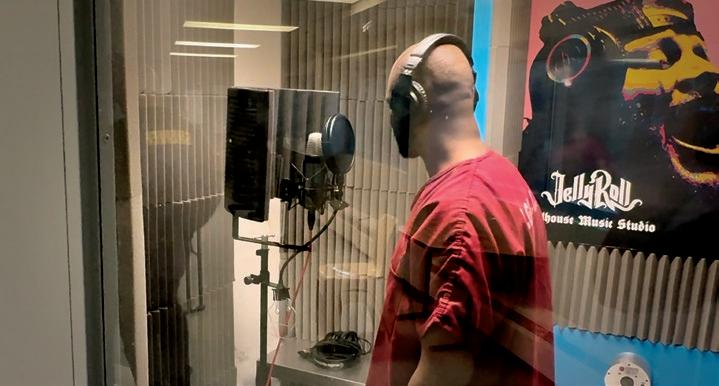
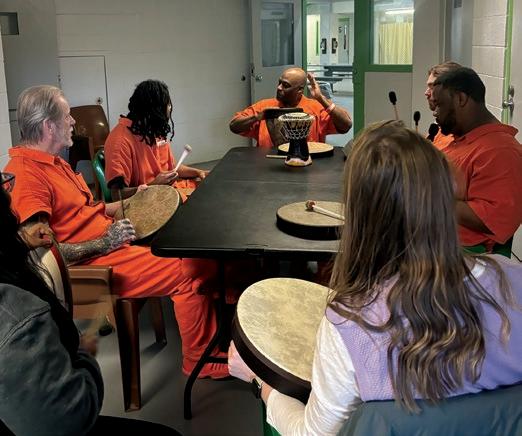
THE INMATES ATTEND A 45-MINUTE SESSION EACH WEEK FOR A TOTAL OF SIX WEEKS. TO DATE, 25 PARTICIPANTS HAVE COMPLETED THE PROGRAM.
Jelly Roll has shared this inspiring message: “ e windshield is bigger than the rearview mirror for a reason” – meaning that what’s ahead of you is more important than what’s behind you. Rodney Lontine, FIM President and CEO is proud to support the work of I.G.N.I.T.E.
“ is work is very important to us,” he shares, “music therapy and now, a jailhouse music studio. Music is a universal language: it connects people, it breaks down barriers. Everybody understands music. And music therapy is one step toward recovery, one step toward redemption and moving forward with your life.”
I.G.N.I.T.E.
According to the Genesee County Sheri ’s Department, “I.G.N.I.T.E.’s mission is to reverse the cycle of generational incarceration through education. Educating inmates has numerous bene ts that help reduce recidivism and make the community safer. By providing inmates with valuable job training, they are equipped with skills they can use upon release to gain meaningful employment and reduce their likelihood of reo ending. Educational programs have also been found to reduce generational incarceration by o ering inmates a way to break out of the cycle perpetuated by previous generations.
“Additionally, providing positive reinforcement while incarcerated through educational programs gives inmates much-needed hope, which has been found to reduce violent behavior and ghts among inmates. is e ective program has been implemented in hundreds of prisons and jails nationwide; it is clear that this approach is one of the most e ective ways of combating crime and restoring a sense of purpose within the inmate population.”

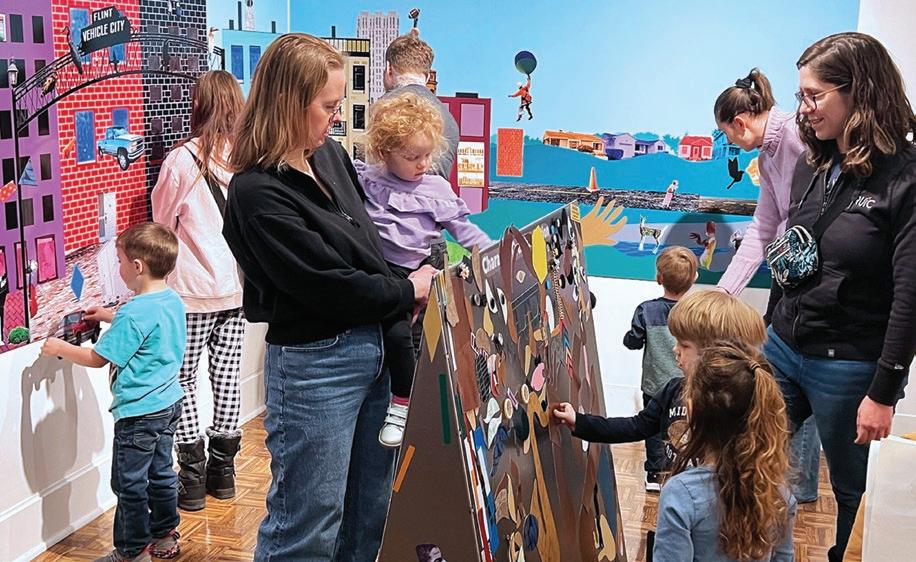

BY SHERRON BARDEN | PHOTOS COURTESY OF FIA
FOR many, visiting an art museum can feel like a passive experience – strolling through galleries, admiring paintings and

sculptures, and reading descriptions on placards. However, the Flint Institute of Arts is transforming this approach through its Gallery Learning Experience (GLEx), an interactive educational program designed to deepen visitors’ engagement with art. Led by FIA educators and docents, GLEx sessions o er a dynamic way to explore the museum’s collection. Rather than merely observing artwork, participants actively engage through discussions, sensory activities and hands-on

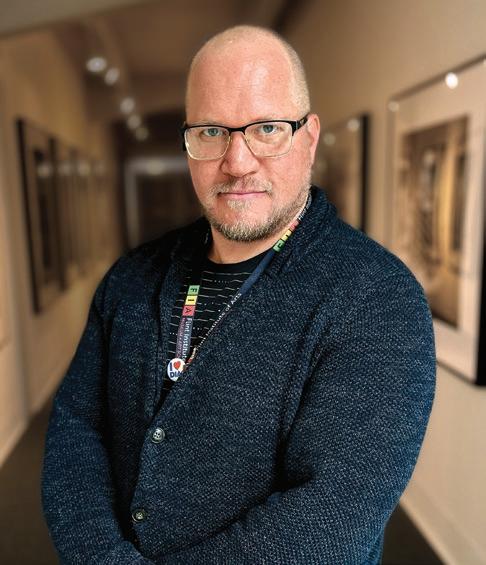
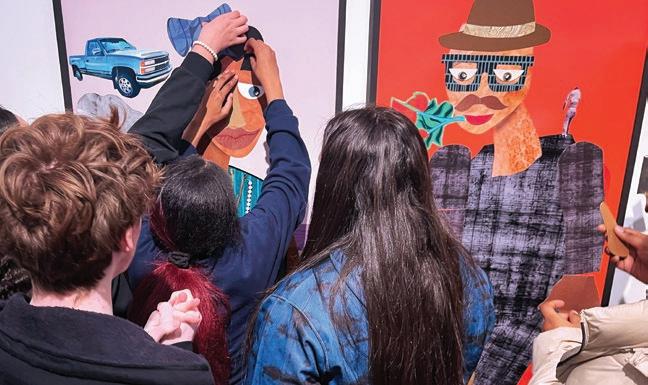
The goal is to make art accessible, thought-provoking and personally meaningful.”
Matt Osmon FIA Director of Education
exercises that bring the pieces to life. Matt Osmon, FIA Director of Education, emphasizes that these experiences serve as a gateway to the museum’s diverse collection.
“GLEx sessions transform passive viewing into active exploration,” he explains. “ rough guided conversations and interactive elements, participants gain insight into historical and societal relevance, artistic techniques and the ways in which artists shape our culture and community.”
Each GLEx session focuses on three to ve curated works within a speci c theme, but the learning extends beyond those selections.
As participants move through the museum, they inevitably discover additional pieces that spark curiosity and deeper engagement.
ese sessions foster visual literacy – helping visitors interpret and “read” artwork in new ways.
Osmon highlights how a session might enhance the
appreciation of Chakaia Booker’s abstract sculpture India Blue, crafted from recycled tires. “Participants pass around a heavy, industrial tire to experience its texture, weight and smell, forging a connection to the artist’s material choices,” he describes.
“By incorporating sensory engagement, we remove barriers to understanding and offer fresh perspectives on why an artwork matters, how it was made and what it communicates.”
GLEx sessions are available for school groups, community organizations, retirement communities, college courses, and other groups of ten or more. Each experience is customized to t the needs and interests of the participants.
For example, a recent high school ceramics class participated in a GLEx focused on contemporary ceramics, integrating a session in the FIA’s glazing lab to explore the science


behind ceramic glazes. An advanced high school art class from Detroit requested a session on modern and contemporary art, prompting the FIA team to design an experience featuring artists like Mario Moore, Robert Motherwell, Helen Frankenthaler and Kehinde Wiley. For an adult group captivated by a Claude Monet painting on display, FIA created an in-depth exploration of Monet’s work before transitioning to a studio session where participants tried their hand at landscape painting.
Osmon notes that each GLEx begins with a conversation, allowing educators to tailor the experience to a group’s interests. “We integrate speci c themes, time periods, styles or media – sometimes adapting an existing experience, other times cra ing something entirely bespoke,” he says.
Current GLEx sessions explore timely and powerful themes, particularly through FIA’s temporary exhibitions. Osmon points to an immersive experience featuring the works of Romare Bearden, Judy Bowman and Cli Joseph.
“ is GLEx guides students through an exploration of art, community and activism,” he says.
“ rough discussion and handson activities in our new Exploration Annex, participants re ect on themes of protest, identity, resilience and cultural heritage.”
Participants consistently express enthusiasm about their GLEx experiences, o en amazed by the depth of information and insights gained. “ e most memorable moments are when a student
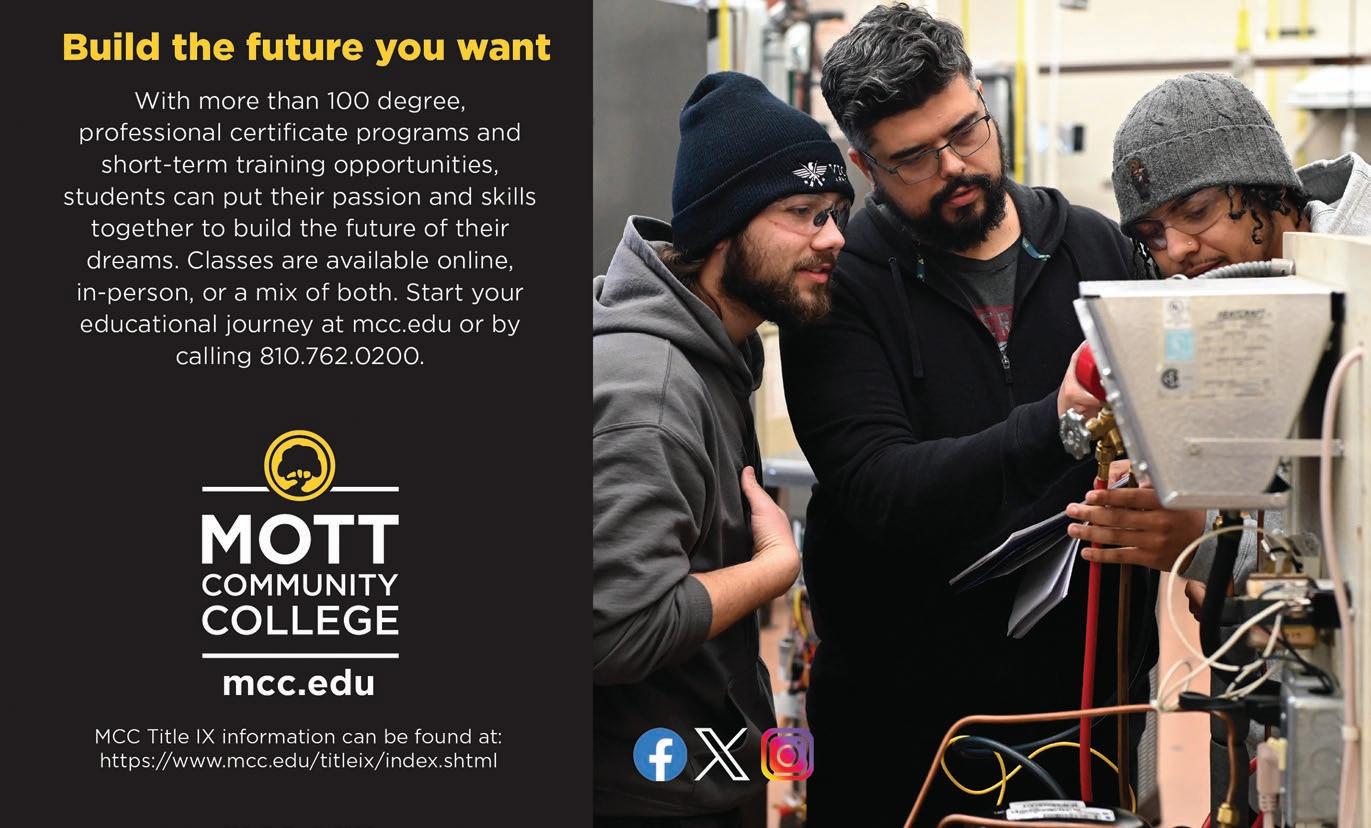

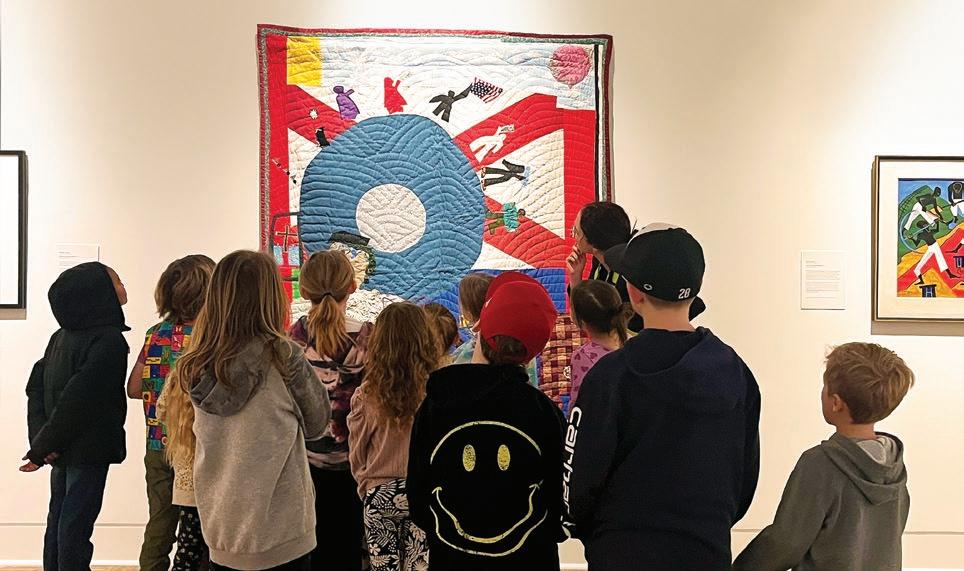
audibly gasps upon seeing a work in person or when they make immediate, meaningful connections between the art and their own experiences,” Osmon shares.
“Sometimes the most powerful
feedback isn’t written or spoken –it’s in the curiosity, laughter, and engaged conversations that unfold throughout the session.”
By transforming traditional museum visits into interactive
learning experiences, the FIA GLEx program ensures that art is not just seen, but truly experienced. Whether through touch, sound or dialogue, these sessions open new pathways for
Gallery Learning Experiences (GLEx) are available for groups of ten or more people. One-month notice is needed to schedule a GLEx. Contact the Art School at 810.237.7314 or email arted@flintarts.org.
understanding and appreciating art, making every visit to the museum an opportunity for discovery.

BY SHERRON BARDEN
OnFebruary 1, Sloan Museum of Discovery unveiled an exciting, hands-on experience designed to change the way visitors think about math. 2theXtreme-Math Alive! is an interactive exhibit featuring 32 activity stations where guests can explore the real-world applications of math through sports, music, fashion, photography, robotics and more.
The 5,000-square-foot exhibit, housed in the FUN Gallery exhibition hall, runs through May 11 and is ideal for kids ages 8 and up. The six themed stations – Outdoor Action, Build Your World, Future Style, Kickin’ It, Game Plan, and Robotics & Space – bring math concepts to life through immersive games and challenges.
Anne Mancour, Marketing Manager at Sloan Museum of Discovery & Longway Planetarium, shared insights on why this exhibit is a must-see.
Making Math Exciting
“ is exhibition is designed to help answer the age-old question, ‘Will I ever use all the math they’re teaching us?’” Mancour explained. “Mathematics is the foundation of so many things
we enjoy in life – sports, music, computer games, robotics and even nature.”
Visitors can create a song while exploring fractions in Mix It Up, design a skateboard using engi-
neering principles in Ramp It Up, or learn about geometry through the Style Revolution 360-degree photo shoot. “All 20 cameras shoot at exactly the same time, then the images are sequenced
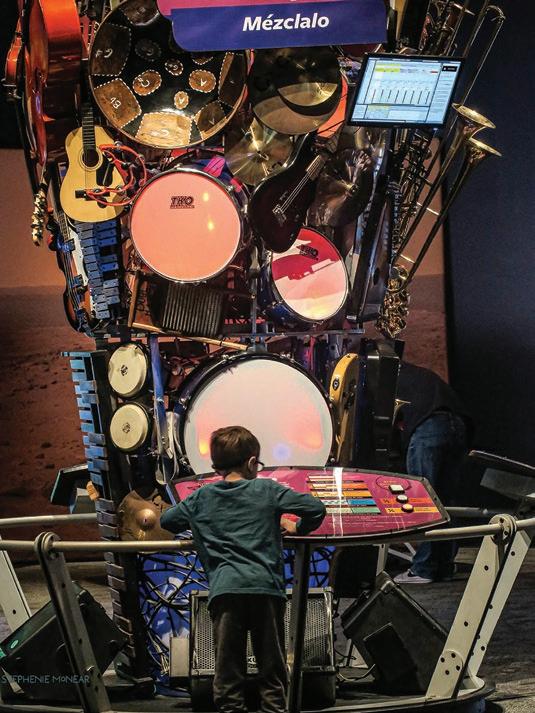

to create a seamless animation,” Mancour said. “It’s a fun way to see math in action.”
Among the many interactive experiences, Mancour highlighted Supertall, a skyscraper design challenge. “Visitors create a virtual skyscraper and test its stability against earthquakes, wind and weight,” she said. “It’s exciting for kids to watch their designs come to life on screen.”
Some activities are already generating buzz. “Style Revolution is a hit because families get a keepsake – a 360-degree photo of themselves striking a pose,” Mancour shared. “And Boardercross, a live-action snowboard game, is a crowd favorite. It takes a lot of finesse to avoid a virtual wipe-out!”
Beyond entertainment, 2theXtreme helps kids see the real-world value of math. “A study found that while 39 percent of middle schoolers believe math is important for their future, 28 percent couldn’t name an interesting career that uses it,” Mancour noted. “ is exhibit bridges that gap by showing how math is used

in game design, architecture and even nature studies.”
Ultimately, Mancour hopes 2theXtreme-Math Alive! leaves visitors inspired. “This exhibit sparks imagination and highlights the endless possibilities math offers,” she said. “Even if kids don’t realize it, they’re using math every day – whether they’re designing a skateboard or playing a video game.”
Produced by Evergreen Exhibitions in collaboration with NASA and leading STEM organizations, 2theXtreme is sponsored locally by the Nartel Family Foundation. Don’t miss the chance to experience math like never before –visit Sloan Museum of Discovery before May 11!

Entry to the 2theXtreme exhibit is $5 per person in addition to General Admission fees and will include access to all four of Sloan Museum’s primary history and science gallery spaces.
General Admission is free for all Genesee County residents, active military and their immediate family members, military veterans, teachers and Members of Sloan Museum and Longway Planetarium.
Mathematics is the foundation of so many things we enjoy in life – sports, music, computer games, robotics and even nature.”
Anne Mancour, Marketing Manager Sloan Museum of Discovery & Longway Planetarium

BY SHERRON BARDEN

Beginning in the fall, the University of Michigan-Flint will o er a Master of Science in Applied Finance (MSAF), a fully online program designed to equip students with practical nancial expertise for career advancement or a transition into the nance industry. With an asynchronous format, the program is ideal for full-time professionals and students balancing busy schedules.
Students will join a diverse network of business leaders, gaining insights from peers across industries and backgrounds. is collaborative environment fosters critical thinking, problem-solving and team-building skills essential for today’s global workforce.
My City asked Dr. Yener Kandogan, UMFlint’s Interim Dean for the School of Management and Professor of International Business, to tell us more about the new program.
MC: What inspired the creation of the online MSAF degree at UM-Flint?
YK: According to the U.S. Bureau of Labor Statistics, Financial Managers job outlook over the next ten years is growing at 16% above average in the U.S., and according to State of Michigan Bureau of Labor Market Information and Strategic Initiatives, this rate is at 18% for Michigan.
The overall goal is to meet the needs of the students wanting a specialized degree in finance. The program will prepare graduates
for various finance-related positions in multiple sectors of the economy domestically, nationally and internationally. The program has two-fold contents, practical and theoretical, that provide the graduate with sufficient tools to pursue a career in finance and/or enter a Ph.D. program in finance.
MC: How does this program differ from traditional finance master’s programs?
YK: The Applied Finance program has a practical approach that provides sufficient tools to improve candidates’ current position in the financial sector or to pursue a new career in finance. The MS is also suitable to prepare those who seek advanced degrees such as a Ph.D. in finance.
The new program equips students to capitalize on global financial market opportunities while tailoring their expertise to career goals. It offers advanced training in financial management, data analytics, investment analysis, portfolio management and financial modeling.
MC: Are there opportunities for students to specialize or tailor the degree to their career goals?
YK: Yes, the program offers two specialized concentrations:
Corporate Finance - Focuses on strategic
decision-making, financial planning, and value creation within corporate settings.
Investment - Equips students with the knowledge to assess investments, build portfolios and advise clients on investment strategies.
MC: What are some potential career paths for graduates?
YK: According to the U.S. Bureau of Labor Statistics, the median annual wage for financial analysts is $99,890, highlighting the strong career prospects for graduates in this field. Program graduates can pursue opportunities such as Senior Financial Analyst, Finance Manager, Investment Analyst and Vice President of Finance.

The Master of Science in Applied Finance (MSAF) at UM-Flint is offered in a 100% online format, allowing students to benefit from flexible class interactions while accommodating the demands of professional life of our students. The program holds AACSB accreditation, a prestigious distinction earned by only 5.5% of business schools worldwide, ensuring a high standard of excellence in finance education.
For more information, visit umflint.edu/ graduateprograms/online-msaf/
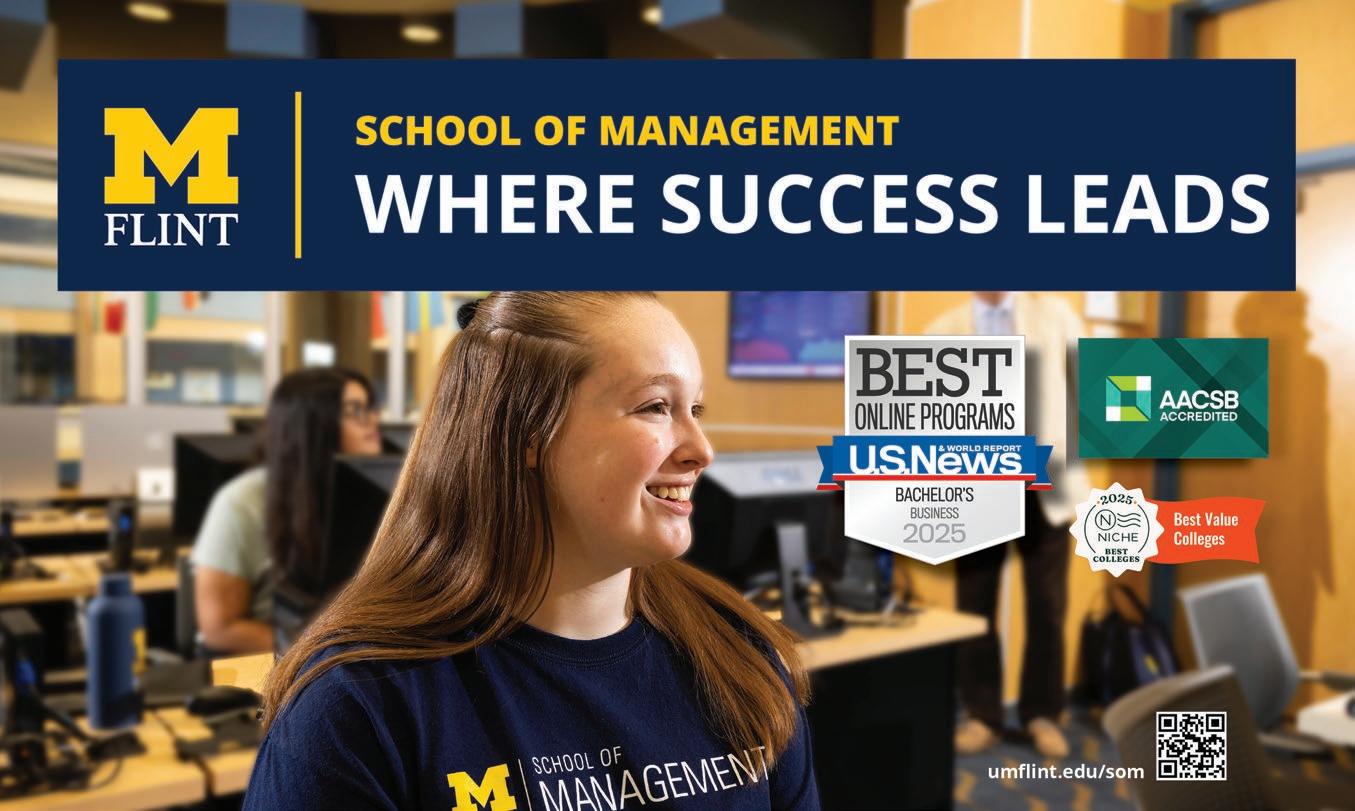




BY SHERRON BARDEN

Navigating the transition to adulthood can be overwhelming, but Michigan State University (MSU) Extension’s Adulting 101 program is designed to help young people develop the essential life skills they need to succeed. Covering topics like nancial management, job stability, housing and mental health, this free program o ers practical guidance in an accessible and engaging format.
MSU Extension 4-H has been teaching life skills to youth for over 100 years. As part of MSU’s land-grant mission, the University seeks to improve lives by bringing expert knowledge and resources directly to individuals and communities. Recognizing the need for more targeted support, Adulting 101 was launched to help teens and young adults prepare for independent living.
“ e program started during the pandemic when we received numerous requests to o er life skills education for youth transitioning out of foster care,” said Kathy Jamieson, MSU Extension Educator. “A team of educators identi ed 30 topics and adapted them into interactive online sessions. When we opened them to the general population, they lled quickly, showing just how great the need was.” Jamieson co-coordinates the program with Laurie Rivetto and Janice Zerbe.

Young adults face a variety of obstacles as they move toward independence, from managing nances and maintaining stable employment to securing housing and balancing responsibilities. Adulting 101 tackles these issues head-on with expert-led sessions that provide practical tools and strategies.
Some of the most common struggles include:
Financial Management – Budgeting, paying bills, understanding credit and managing debt.
Job Stability – Securing and maintaining employment, workplace expectations and career planning.
Housing & Rent – Finding a ordable housing, understanding leases and communicating with landlords.
Time Management – Balancing work, social life and personal responsibilities.
Emotional & Mental Health – Managing stress, setting boundaries and building healthy relationships.
Each session is led by MSU Extension educators or industry experts who provide guidance on these crucial topics. Instructors include Jamieson and Rivetto, as well as Jinnifer Ortquist, Darien Wilkerson and Janelle Stewart.
The response to the program has been overwhelmingly positive, with participants from across Michigan and beyond joining the monthly sessions. Many have shared how Adulting 101 has influenced their lives:
“ e ‘healthy relationships’ session will save me a lot of therapy bills down the line. It’s very, very important stu .”
“Great program – the recordings are especially helpful for someone with a busy schedule.”
“I love these programs. You’ve done a wonderful job continuing to educate the community.”
Covering topics like financial management, job stability, housing and mental health, this free program offers practical guidance in an accessible and engaging format.
Participants have also expressed how the program has changed their approach to adulthood:
“I now pay attention to my small spending and the emotions in uencing my nancial decisions.”
“I plan to research my desired career and nd someone to interview to learn more about the eld.”
“I’m enforcing boundaries, even when it’s uncomfortable.”

With sessions o ered online, Adulting 101 makes it easy for young adults to learn essential life skills in a way that ts their schedule. Whether it’s nancial literacy, career readiness or personal well-being, this program provides the tools needed to navigate adulthood with con dence.
For those hesitant about attending the sessions, Jamieson has a simple message: “Spend an hour with us for FREE and you’re guaranteed to gain insights that can save you time, money or stress in the future.”
e March 3 session is entitled “Get it Together: Time and Organization Tips to rive.” For more info or to register for an upcoming session, visit canr.msu.edu/events/adulting-101-2025
MyCityMag.com




This spring, SHIFT will complete a much-anticipated move and relocate their business to Downtown Fenton. My City asked the co-owners about the inspiration for the move and what shoppers can expect at the new retail space.
MC: What inspired this move?
As we SHIFT into our next chapter, we’re really trying to not just stay alive but also thrive. We’ve always focused on community and tried to support and lift up other small businesses. Our model has always been to collaborate through “shopportunities” that teach, inspire and provide at least a trifecta of “wins” every time we host or participate in an event: for community, for us and for our neighboring small businesses.
Our demographic survey determined that over 68% of sales came from south Genesee County, especially the Fenton-Linden area. While it was incredibly bittersweet for us to leave Downtown Flint after six years, we feel the Downtown Fenton foot traffic makes it a better fit for SHIFT. Our new location will give customers an opportunity to park, walk, explore and experience the many local restaurants and retailers.
MC: What new things will SHIFT customers enjoy?
In the renovated space, we’ve kept the existing 1800s brick walls, but are updating our method of displaying merchandise. A “snack counter” will offer endless refreshments to enhance the shopping experience and a new, taller and more
open storefront will allow great, natural daylight to highlight all SHIFT has to offer – which will include new product lines. We also hope to create more “shopportunities” for our customers to gather, exchange ideas, create custom projects and have fun! We want to collaborate on activities with neighboring small businesses by driving foot traffic in Downtown Fenton. Parking is available behind the store in a community lot shared with Fenton House, as well as on-street FREE parking in Downtown Fenton. Of course, we will continue to offer our same great customer service and personalized shopping experience!
MC: What excites you most about this new chapter for SHIFT?
We look forward to the opportunity to bring SHIFT to our walkable, family-friendly “home community” and to get to know our new neighbors and customers.
We hope our long-time patrons who don’t live in Fenton will find us when they come to enjoy the many great restaurants and annual events Downtown and at the Community & Cultural Center. In Fenton, there’s literally something for everyone and we can’t wait to SHIFT right in and contribute to all the fun!



COMPILED
BY
KAREN PIACENTINI, OWNER OF FENTON’S OPEN BOOK
Whether you’re craving a deep dive into medical history, a return to Panem, a bewitching tale or a heartfelt story of friendship, this list has something for everyone. Featuring bestselling ction, fascinating non ction and must-read works by notable Michigan authors, these books promise to inform, inspire and transport you. Get ready to turn the page on your next great read!
• Everything is Tuberculosis: The History and Persistence of Our Deadliest Infection | by John Green
• Sunrise on the Reaping (A Hunger Games Novel) | by Suzanne Collins
• Witchcraft for Wayward Girls | by Grady Hendricks
• The Clover Girls | by Viola Shipman
BY NOTABLE MICHIGAN AUTHORS
• The Lady with the Dark Hair | by Erin Bartels
• Magic Season: A Son’s Story | by Wade Rouse
• The Lions Finally Roar: The Ford Family, the Detroit Lions, and the Road to Redemption in the NFL | by Bill Morris
Grady Green, a bestselling NYT author, hasn’t been able to write since his wife disappeared. Sent by his agent to a remote Scottish island to break through his creative block, he instead stumbles upon an unpublished manuscript le behind by the cottage’s previous owner. As he unravels its haunting secrets, his grip on reality begins to slip. is ercely psychological thriller is packed with twist upon twist you won’t see coming. A true must-read!



Asix-year-old sweetheart, Foxy has been waiting to nd her forever home since March 1, 2024. Despite a tough past when other dogs were allowed to bully her and le her with scars, she remains the most loving, gentle soul.
Because of her history, she’d do best as the only dog in the home – but when it comes to kids, she’s all in! Foxy is always a top sta pick to join HSGC events with children, and she soaks up every bit of love she receives. Her scars may make some people look twice, but we think they make her even more beautiful.
Could you be the one to give Foxy the happy ending she deserves?





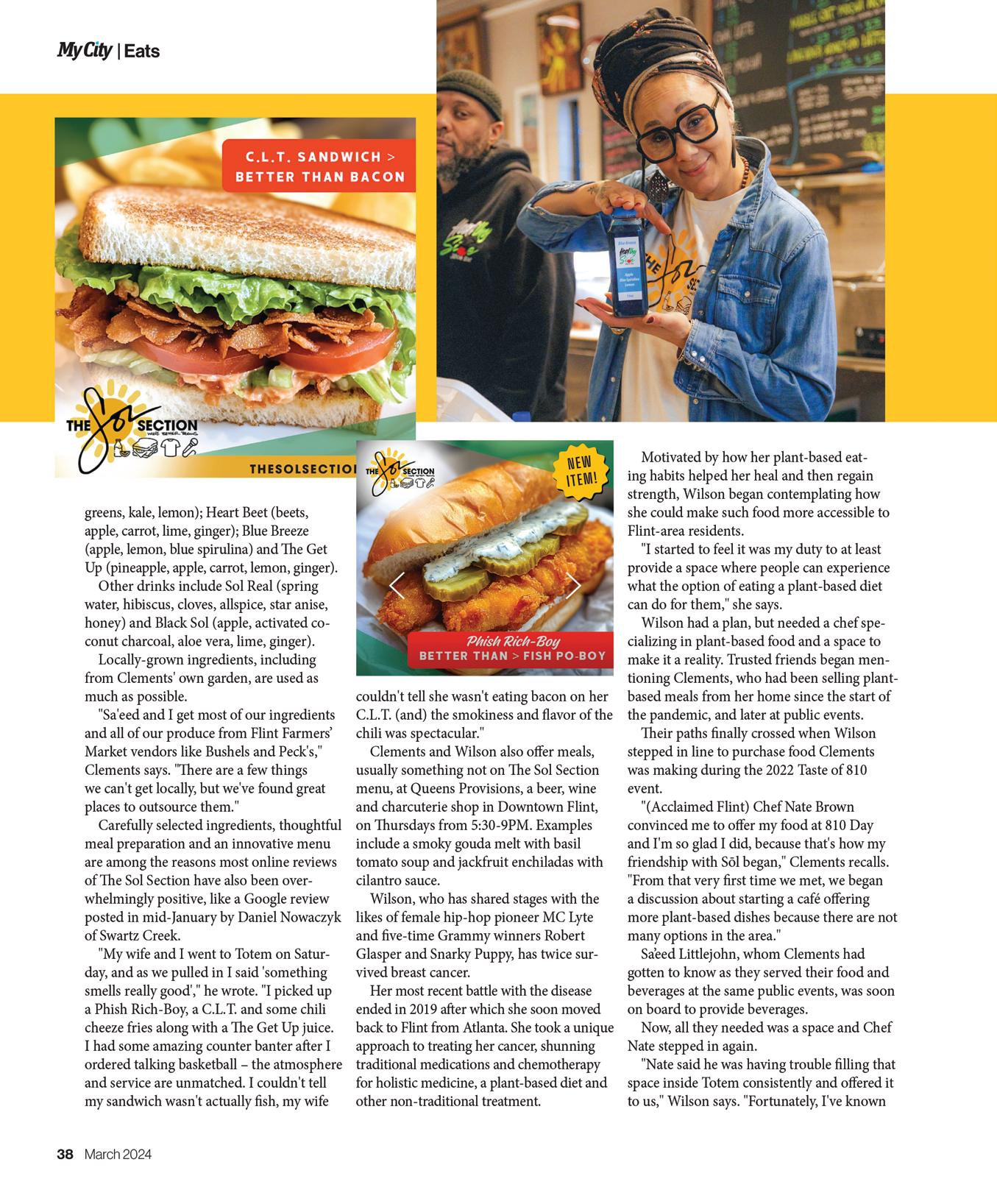








Genesys Conference & Banquet Center | 2.1.2025
PHOTOS
BY
LENI KEI PHOTOGRAPHY
Each year, the Genesee District Library celebrates Black History Month by honoring community members for their good work in Greater Flint. Individuals or organizations can be nominated for the honor, and are then chosen by the GDL Black History Month Brunch Advisory Committee comprised of community members, and GDL sta and Board. Selected individuals receive the GDL Award of Excellence, and selected organizations receive the GDL Partner in Progress Award.
Attended by hundreds of community leaders, area political figures and community members, the 2025 event was themed “African Americans and Labor.” ABC 12 News Anchor Matt Franklin served as emcee and the keynote address was delivered by former Major League Baseball player and bestselling children’s book author, Chris Singleton. The program also featured a performance by local vocalist, Alina Oliver.
This year’s Award of Excellence recipients were Baba Kevin Collins, Flint Mayor Sheldon Neely and Pastor Dr. Rabon L. Turner, Sr. The Partner in Progress Award was given to the Floyd J. McCree Theatre.
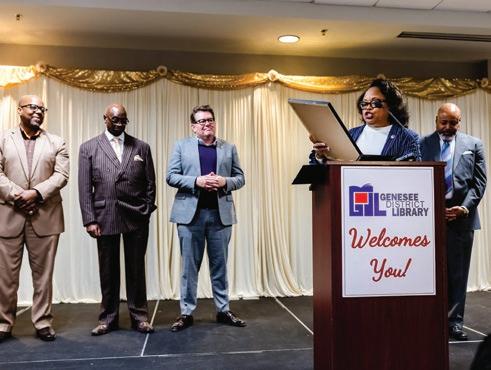

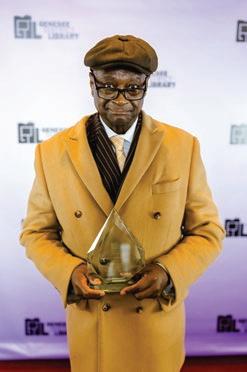
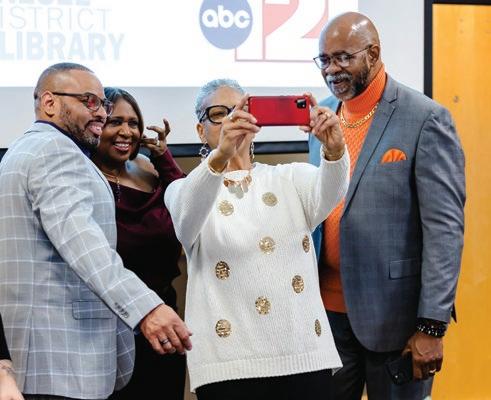


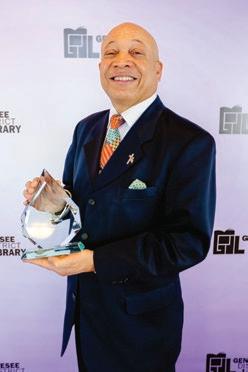

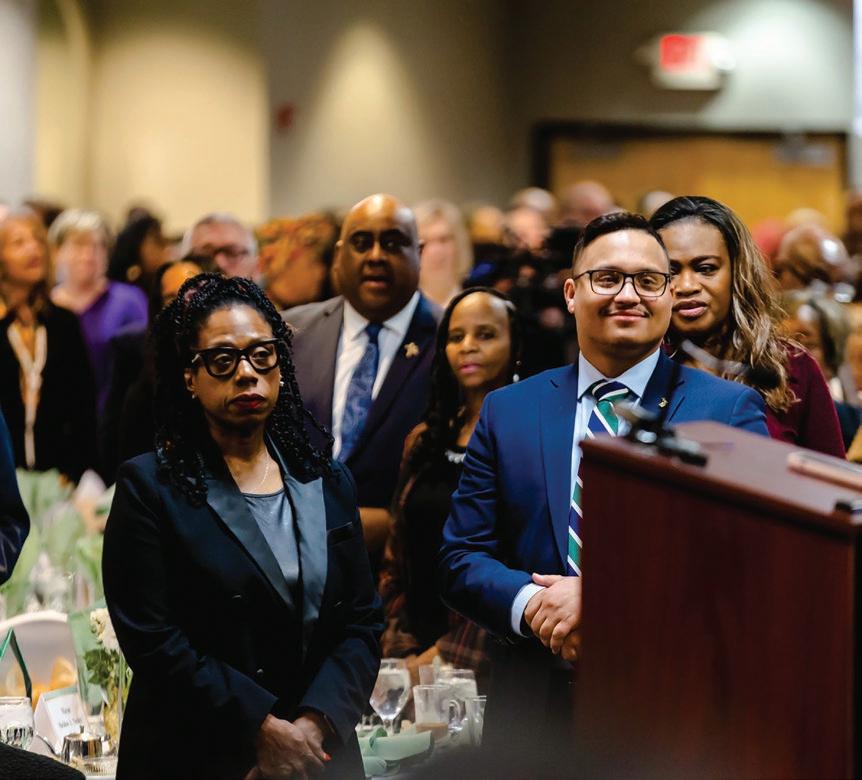



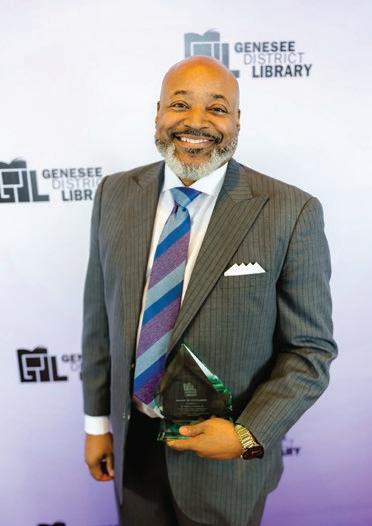

PHOTOS BY MICHAEL GLEASON
Inpartnership with Communities First, Inc., the Flint Institute of Arts Museum + Art School presented another well-attended celebration of Black history and African American art and artists. This year’s event showcased the exhibition openings of Romare Bearden: Artist as Activist and Visionary and We Loved the Swag: From Black Bottom Until Now by Detroit-based collage artist, Judy Bowman.
The evening began with an informative lecture in the FIA theater offered by co-director of the Romare Bearden Foundation, Diedra Harris-Kelley.
Attendees then gathered for an elegant and lively reception featuring cocktails and hors d’oeuvres, exhibition openings in the Hodge and Temporary Galleries, and live musical entertainment in Isabel Hall by Feimstro with vocalist, Jasmine Turman. All galleries were open throughout the evening for guest enjoyment.
Proceeds from this event benefit exhibitions and expansion of the FIA’s African American art collection.
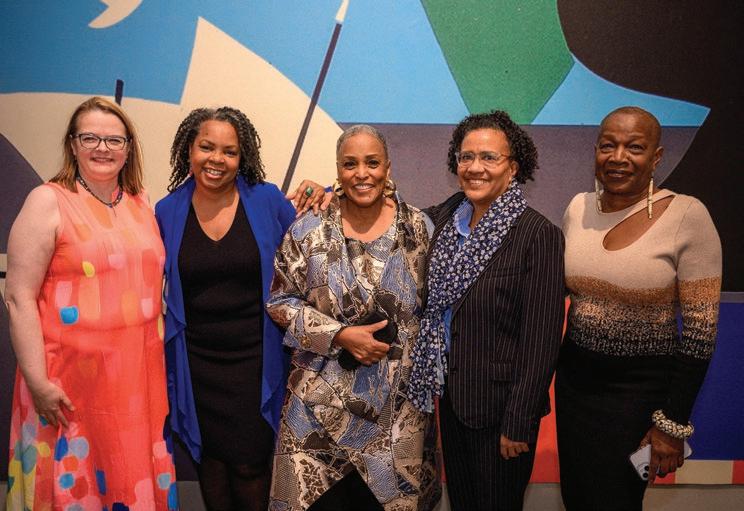
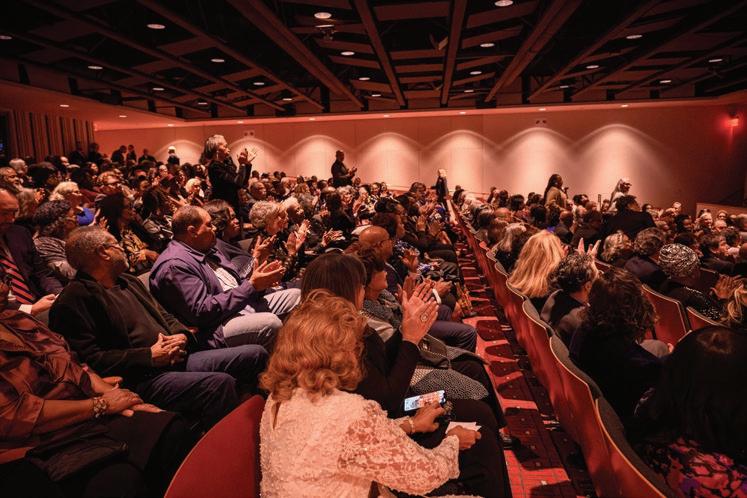
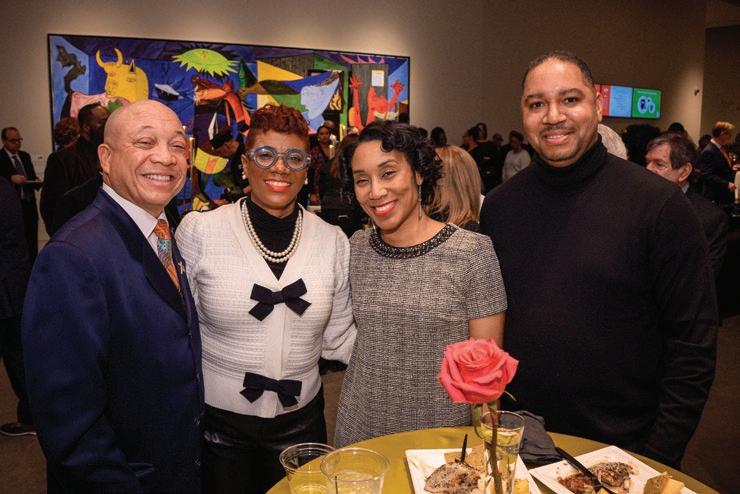


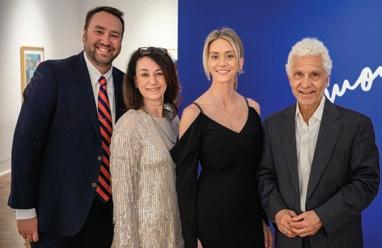








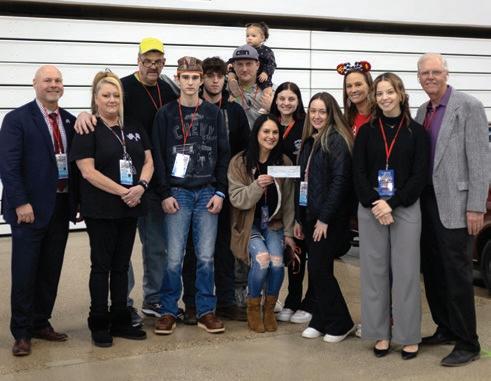

Dort Financial Center | 2.7-9.2025
PHOTOS PROVIDED BY BACK TO THE BRICKS® & SPONSORS
Chrome & Ice™ 2025 was a thrilling tribute to the “Evolution of Racing”!
e engines roared and the excitement was undeniable as Chrome & Ice™ 2025 took over the Dort Financial Center for three unforgettable days. Back to the Bricks® produced another high-octane indoor winter classic car event paying tribute to the iconic vehicles, legendary gures and exhilarating stories that have shaped the world of racing.
From the moment attendees stepped into the Dort Financial Center lobby, they were met with an awe-inspiring display of race memorabilia, classic and custom vehicles, muscle cars, hot rods, sports cars and trucks, with every corner of the arena – hallways, mezzanine and two main exhibition spaces – packed with automotive excellence.
With the support of title sponsor General Motors and sponsor Dort Financial Credit Union, along with special thanks to ABC-12, this year’s event featured more than 50 sponsors and automotive-related vendors, live demonstrations, concessions and non-stop entertainment. Adding to the excitement, the VIP Experience o ered an exclusive evening of cocktails, hors d’oeuvres and live music from e Saucecats.
e weekend’s signature highlights included the crowning of Miss Chrome & Ice™ 2025 on Saturday at noon, where Minerva Moon took the title alongside Ms. Kustom Kitten, Sally Sparkplug; Ms. Crusin’ Cutie, Patty DeVille; Ms. Vivacious Vixen, Ruby Rouge; and Little Ms. Chrome & Ice, Miss Lady Lace. e excitement continued through Sunday with the highly anticipated awards ceremony. is year’s event also introduced all-new elements, including a fundraising Euchre Tournament, ensuring there was something for everyone – whether a dedicated car enthusiast, casual admirer or fan of classic Americana.
Most importantly, proceeds from Chrome & Ice™ and the VIP Experience support the Back to the Bricks® Youth Scholarship Fund, helping to fuel the dreams of future automotive and racing industry professionals.

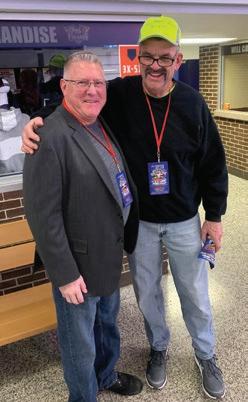








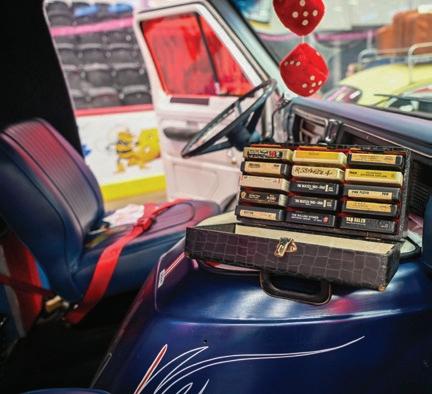



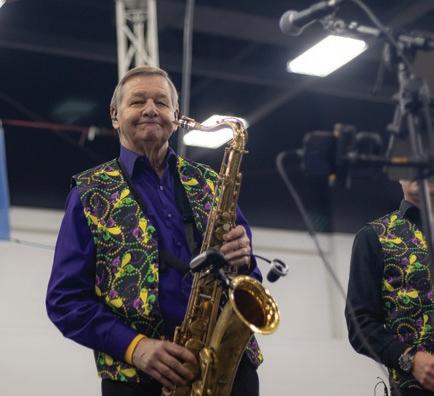



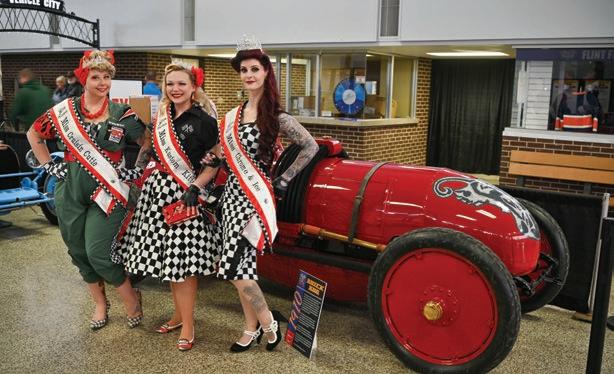

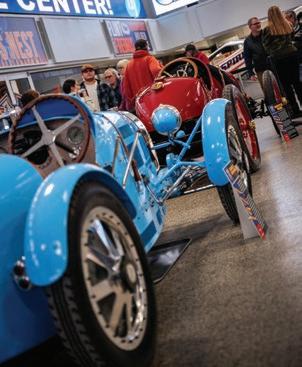









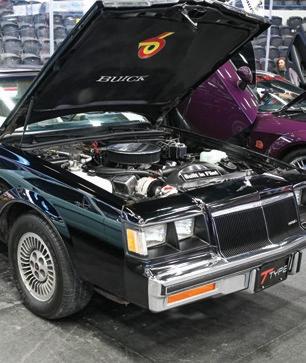
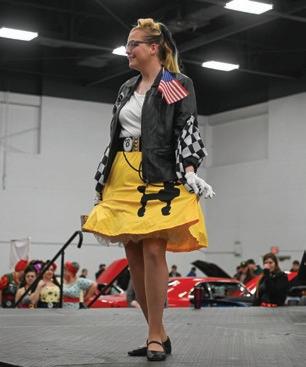






FIM Dort Music Center | 2.7.2025
PHOTOGRAPHY
BY
JENN ALEXANDER
For the past 28 years, this event has been vital in raising funds for the Flint School of Performing Arts Seeing Stars! tuition assistance program, ensuring that students can study music, dance and theater regardless of their ability to pay for classes.
The FSPA supporters enjoyed a silent auction, wine and a strolling dinner of tastings generously provided by many of Greater Flint’s best restaurants, then gathered in MacArthur Recital Hall for the evening’s highlight: the Seeing Stars! Student Showcase.
A er a welcome from event co-chairs Patti Higgins and Greg Hilliker, the program opened with Flint Youth Ballet dancers Annika Warby, Emma Benton and Brooklynn Wilson performing Variations from Coppelia staged by Tara Gragg and Elizabeth Philippi. Next onstage were Flint Youth eatre artists Alexa Cro , Victor “Cruz” Hinojosa, Annabelle Richardson, Sophie Richardson, Kennedy Smart, Ash Stiles, Wendy ibodeau and Amaija Witherspoon performing a selection from “ e War of the Worlds: e 1938 Radio Script.” e actors were followed by musical selections from FSPA Young Musicians Charleigh Hose, violin; Robert Granville, piano; Brooklyn Mendiola, voice; Chava Jones, viola & Hadassah Jones, piano; Kennedy Smart, voice w/Danyelle Hillman, piano; Bradlee Coggins, marimba; Madyson Earnhart, harp.
Following remarks by FSPA, FYSO and Dort Honors String Quartet Alumnus Cole Benton, a Mendelssohn excerpt was performed by The Dort Honors String Quartet: Elizabeth Beland and Annika Warby, violin; Emma Benton, viola and Ashleigh Armstrong, cello. The program concluded with Samuel Belill, Bradlee Coggins, Kenneth Edson, Liam Rogers, Jesse Urodgy and DJ Whealon performing Xylophonia
The evening ended with delicious desserts and a champagne toast to celebrate the student performers who reminded attendees what their support means to the FSPA. Last year alone, the Seeing Stars! tuition assistance program awarded $230,000 to local FSPA students and their families.

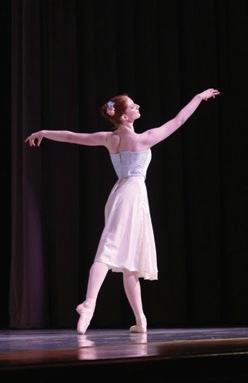

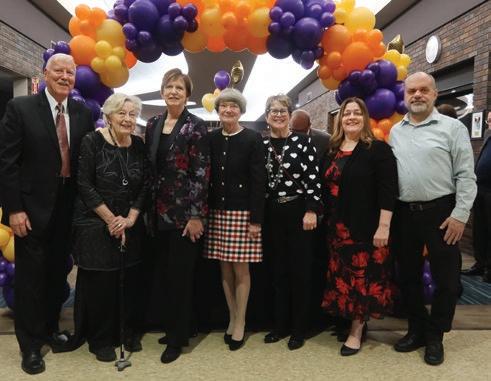
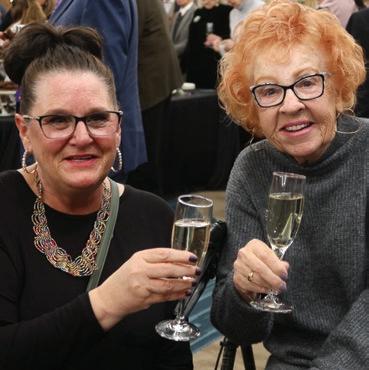







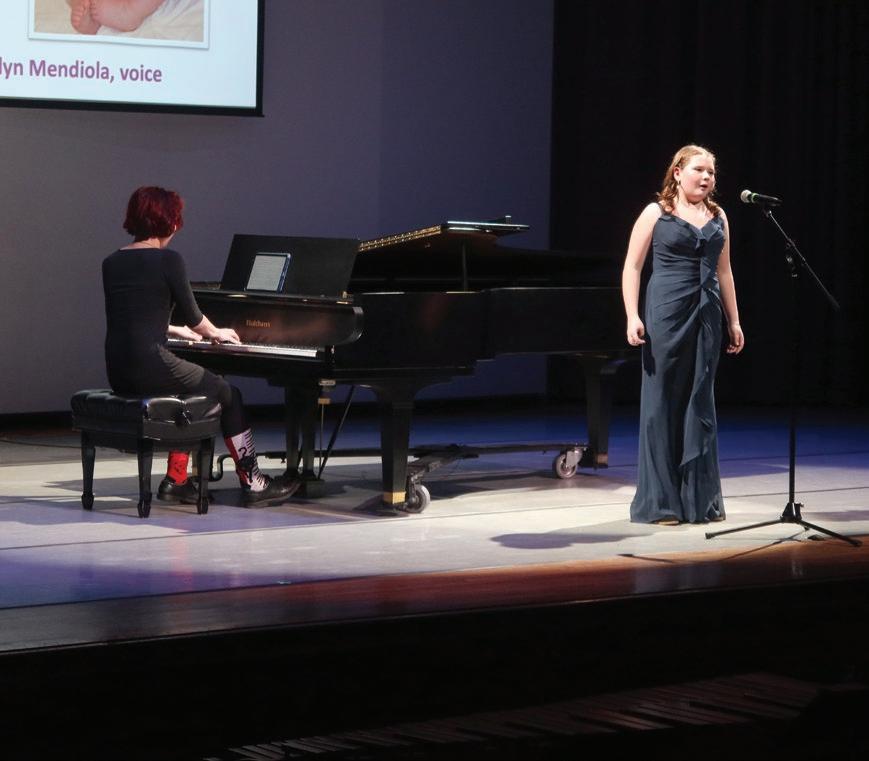





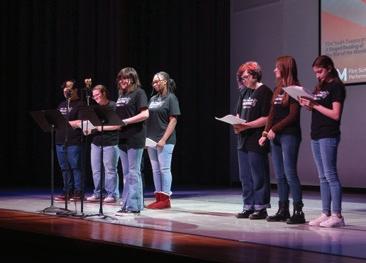



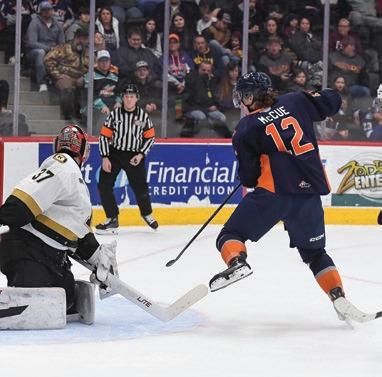
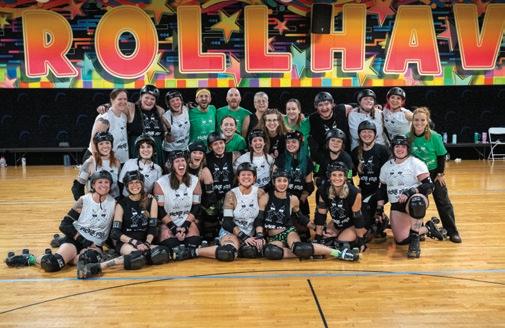

MCC Concert Choir & Chamber Singers Mott Memorial Building Auditorium
- 4.5 Thurs-Sat Led Zeppelin: Whole Lotta Led Laser Light Show Presented By: Longway Planetarium
80’s Prom with Dr. DeLorean and the Space Invaders The Machine Shop 14-16 The MARVAC 48th Annual Flint RV & Camping Show Presented by Dort Financial Center
45th Annual Pot O’ Gold 4-Mile Run & Walk Hosted by The Crim Downtown Flint Saint Patrick’s Day Authentic Irish Cuisine Cork on Saginaw


BY DR. CHRISTOPHER DOUGLAS
President Trump has oated the idea of replacing the income tax with tari s. As he correctly notes, tari s were the primary funding source for the federal government until the 16th Amendment was rati ed in 1913, which allows Congress to levy an income tax. However, attempting to return to tari s to raise government revenue over a century later will encounter a practical di culty, namely the federal government is much, much larger now than it was then. is year, the federal government is on track to spend nearly $7 trillion with about $2.4 trillion raised from income taxes. In contrast, the federal government collected only $79 billion in revenue from tari s. A trillion is equal to a thousand billion, meaning personal income tax revenues are 30 times what tari revenues are. us, tari s would have to be increased by a factor of
30 to make up this revenue. Such an increase in tari s would grind international trade to a halt, cause tari revenue to fall to zero, crash the stock market and plunge the economy into a massive recession.
Note that in 2024, the United States imported $3.2 trillion worth of goods and services while exporting $2.1 trillion. Raising $2.4 trillion from tari s would require a 75% tari on all U.S. imports. Such a tari would result in no imports as the U.S.-produced goods or services would be cheaper, thus no tari revenue, as well as the problems described above.
Prior to the Civil War, federal government expenditures were only about $450 million, adjusted for in ation. is is 0.006% of what the federal government currently spends today. During that time, federal spending was limited to modest military, infrastructure, government operations and land acquisitions.
If the federal government were that size again, it could nance itself through tari s. Beginning with the Civil War, the government began to get permanently larger. e Civil War, Reconstruction, the Progressive Era, World War I, the New Deal, World War II, Social Security, Medicare, the modern military and the welfare state are all examples of permanent governmental expansion.
During the Civil War, Abraham Lincoln established the rst income tax to raise revenue to pay for the war, signing the Revenue Act of 1862 and establishing the Commissioner of Internal Revenue. In 1872, the Revenue Act was repealed by Congress. As the federal government continued to

grow, Congress tried to reimplement it in 1894 but was ruled unconstitutional by the Supreme Court in 1895, hence the need for the 16th Amendment.
Reducing the size of the federal government to 1800s levels would be lightyears beyond what even the most optimistic forecasts believe DOGE could achieve. Even balancing the budget by closing the $2 trillion annual budget de cit seems unfathomable. at would require doubling income taxes, or making massive cuts to entitlements, the military, and non-defense discretionary spending. For better or worse, choices of previous generations of Americans have given us a federal government that cannot be nanced by tari s alone.
and Professor of Economics, he teaches Principles of Microeconomics, Principles of Macroeconomics, International Economics, Public Finance and Sports Economics.

BY VERA HOGAN

Does the thought of downsizing and possibly moving to a smaller, more manageable home someday scare you? Me, too. But if you decide to go for it, spring is a good time to get started.
By getting started, I mean prepping your house. Many people, like me, have trouble looking past the overwhelming big picture. If you’ve lived in your house for many years, there is likely a massive accumulation of “stuff.” Deciding where to start decluttering and getting rid of that stuff is the hardest part of the process.
To make matters worse, some of that stuff is not even yours. The children you raised in that house who have since grown up and are now out on their own probably left many of their belongings in your basement or garage, as if it is their personal storage space. I know I’m not alone in this. Attempts to have them retrieve their things often fall on deaf ears.
A good friend and successful real estate broker gave me some great advice. He said to give them ample notice to clear it out –
like 30 to 45 days. Let your adult kids know, in a written document they sign, that you expect them to remove their things before (choose your date) as that is the day the rental dumpster is coming. My friend guaranteed they will comply. I have yet to do this and hope I don’t have to.
Then, it’s on to your things. I have read all kinds of books and sites online on organizing and decluttering. But it is easier said than done. Organizing items into three categories – keep, donate and toss – involves a lot of not only physical work but mental resolve, as well. It can be a very emotional task. And taking Marie Kondo’s advice to keep only things that bring you “joy” is also easier said than done. All my things brought me joy at one time or another.
I’m very interested in repurposing. For example, I have more glassware, speci cally drinking glasses, than anyone I know. I thought it might

be cool to ll them with a variety of candies and chocolates, wrap a pretty holiday ribbon around them and donate or give them as Christmas gi s. It’s a de nite possibility! I tried a garage sale a couple of years ago. That ended up with not only a garage filled with my things on and around folding tables, but also more stuff the kids brought over and wanted me to sell. Then, there were a couple of well-meaning neighbors who decided to take advantage of me being trapped in my hot garage for the weekend and make it their personal cocktail and visiting time. Yes, I am procrastinating; but in my defense, I have a very old house and much of my stuff is stored on top shelves – what I like to call the nosebleed section. Maybe I could ask my six-foot-plus sons to help me … hmmm, maybe not.
BY ALEXANDRIA NOLAN-MILLER

When I was growing up, my family didn’t do Spring Break. We didn’t travel or go anywhere special. My parents worked, and if anything, Spring Break was more of a hassle. It meant nding me a babysitter, or as I got older, making sure I stayed out of trouble – though I wasn’t much for that. While other families were heading to Florida, South Padre Island, Myrtle Beach or Los Angeles, I was at home, reading a book or hanging out with neighbor kids whose families didn’t go anywhere, either. ose years without Spring Break shaped my desire as an adult to go on adventures as if my life depended on it.
When my son was born and especially once he started school, I made it a priority to take him on some kind of Spring Break trip. Two years ago, we drove to New Orleans for a few days. Last year, we traveled to Great Britain, exploring the northern part of England. But this year, with my new husband by my side, I knew I wanted to nd a destination that would o er something special for both of them – something we all would have appreciated as kids.
So, this year, we’re heading to Puerto Vallarta.
I’ve been to Puerto Vallarta before, but never with my son, and certainly never with my husband. Before we met, he had never traveled outside the U.S.; he didn’t have a passport and thought exploring the world just wasn’t for him. Now, with these trips lined up, I feel an obligation to introduce the world to him and my son in a way that makes them fall in love with traveling as I have.
So, what makes the perfect Spring Break destination?
that relaxation and pleasure are just as important as deadlines and obligations.
So we are preparing – buying linen garments for the warm days, scouting the best restaurants and planning day-trips that will appeal to both adults and a young child. We’re mentally getting ready, looking forward to the light on the horizon. Because, ultimately,
by the pool, envious of the kids who didn’t spend their entire vacation in front of the TV but instead traveled to far-o places. Now, as an adult, I’m making my childhood Spring Break dreams come true, one destination at a time. ese trips are even more meaningful with the wonder in my little boy’s wide-eyed gaze and the excitement of a grown man
Long live Spring Break, and long live taking much-needed breaks whenever they’re needed – in the spring or otherwise.
Well, sunshine is a must. Preferably a beach. Add in margaritas and tacos, and I think the trip might just be unbeatable. Spring Break is that rst pause in the year. Winter is coming to an end, summer is on the horizon and that break to warmer places is a reminder that sunny days are ahead. It’s a reminder that life isn’t just about work and school. ere’s time to breathe, re ect on what’s been accomplished and recognize
Spring Break is that deep breath before diving back into the chaos of everyday life. And sometimes, that’s all we need to power through the stresses of work and school.
As a kid, I longed for Spring Break. I dreamed of carefree days

discovering a world that once seemed out of reach, now open and welcoming to us.
Long live Spring Break, and long live taking much-needed breaks whenever they’re needed –in the spring or otherwise.
Alexandria Pazienza-Nolan is a misplaced Michigander currently living in the wilds of the Houston urban jungle with the world’s most charming kindergartner. She is a published novelist and contributor to various online and print publications, including a lifestyle blog, AlexandriaNolan.com. When not writing, she can be found teaching, reading or traveling, or reading about traveling.











